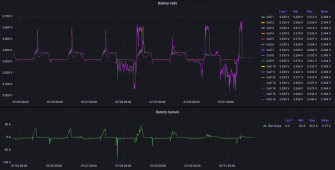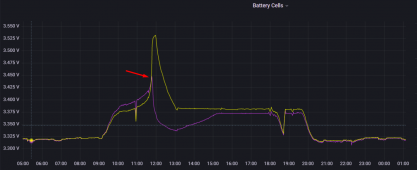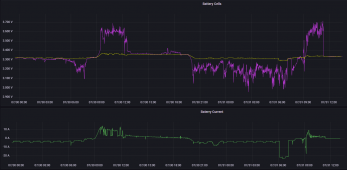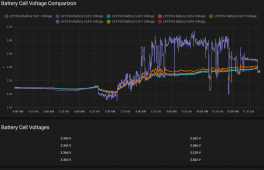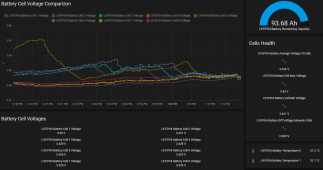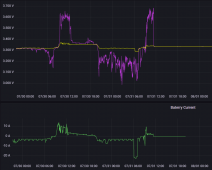Andre Magro
New Member
- Joined
- Jun 16, 2020
- Messages
- 38
Hello,
After the extraordinary help in this forum, with the top balance issue I had, I finally put my battery bank at work.
And after 2 months of great working, and right after a 80A discharge, one of the cells started presenting a strange behavior. Basically when the battery is charging/discharging, this cell is reaching very fast max and minimum voltages in an inconsistent way, and is causing the malfunction of all the battery bank, triggering the BMS consecutively to stop charge/discharge.
The bellow images show what happened before the 80A discharge.
Battery Cells voltages and current of last 7 days (cell 7 (purple) is the one)
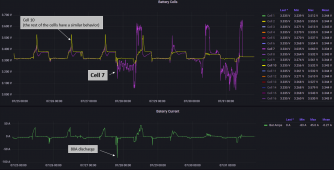
In the day before of the 80A discharge I even thought the cell could recover, but in the next days the situation was getting worse, and at this moment the charge/discharge mode in the BMS of the battery bank was disabled, and I'm not using the battery at all until I can solve this issue.
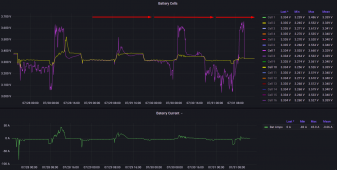
After seeing this graphs I also found that this cell could not reach the 3.525 final voltage during the bulk charging procedure.
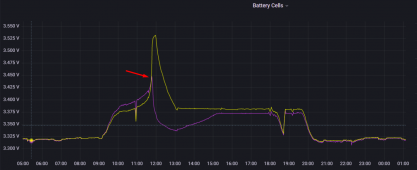
So, can I assume this is a faulty cell?
Is there any way that I can recover this cell?
16 cell (48V) 272Ah battery bank
JKBMS 24S 2A 200A BT
Inverter Voltronic Axpert MKS IV 5.6kW
Thanks
After the extraordinary help in this forum, with the top balance issue I had, I finally put my battery bank at work.
And after 2 months of great working, and right after a 80A discharge, one of the cells started presenting a strange behavior. Basically when the battery is charging/discharging, this cell is reaching very fast max and minimum voltages in an inconsistent way, and is causing the malfunction of all the battery bank, triggering the BMS consecutively to stop charge/discharge.
The bellow images show what happened before the 80A discharge.
Battery Cells voltages and current of last 7 days (cell 7 (purple) is the one)

In the day before of the 80A discharge I even thought the cell could recover, but in the next days the situation was getting worse, and at this moment the charge/discharge mode in the BMS of the battery bank was disabled, and I'm not using the battery at all until I can solve this issue.

After seeing this graphs I also found that this cell could not reach the 3.525 final voltage during the bulk charging procedure.

So, can I assume this is a faulty cell?
Is there any way that I can recover this cell?
16 cell (48V) 272Ah battery bank
JKBMS 24S 2A 200A BT
Inverter Voltronic Axpert MKS IV 5.6kW
Thanks
Attachments
Last edited:



